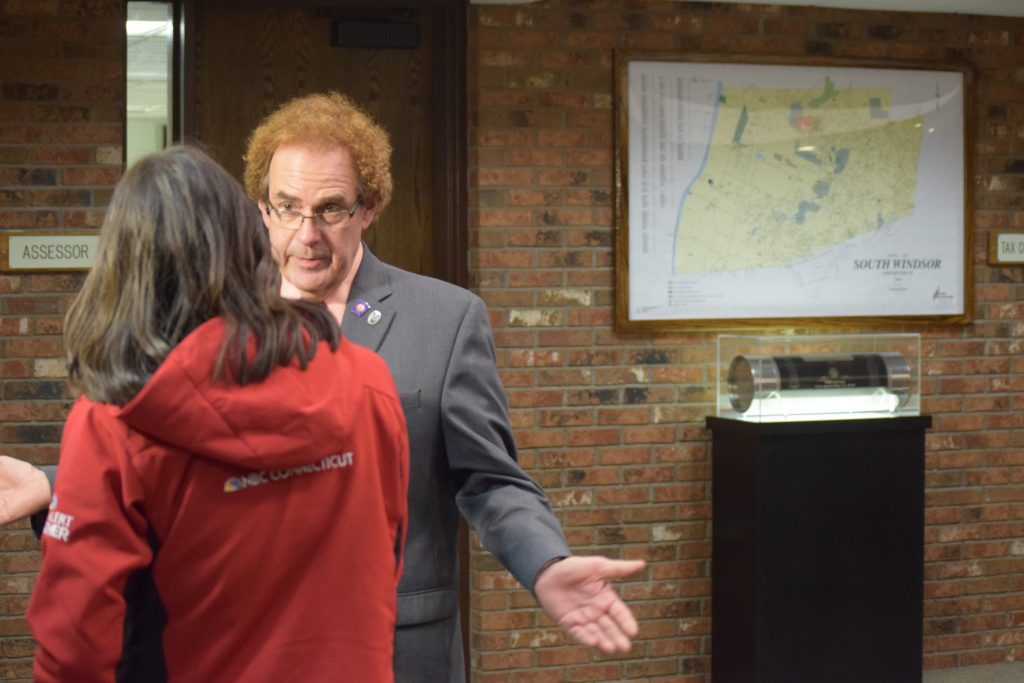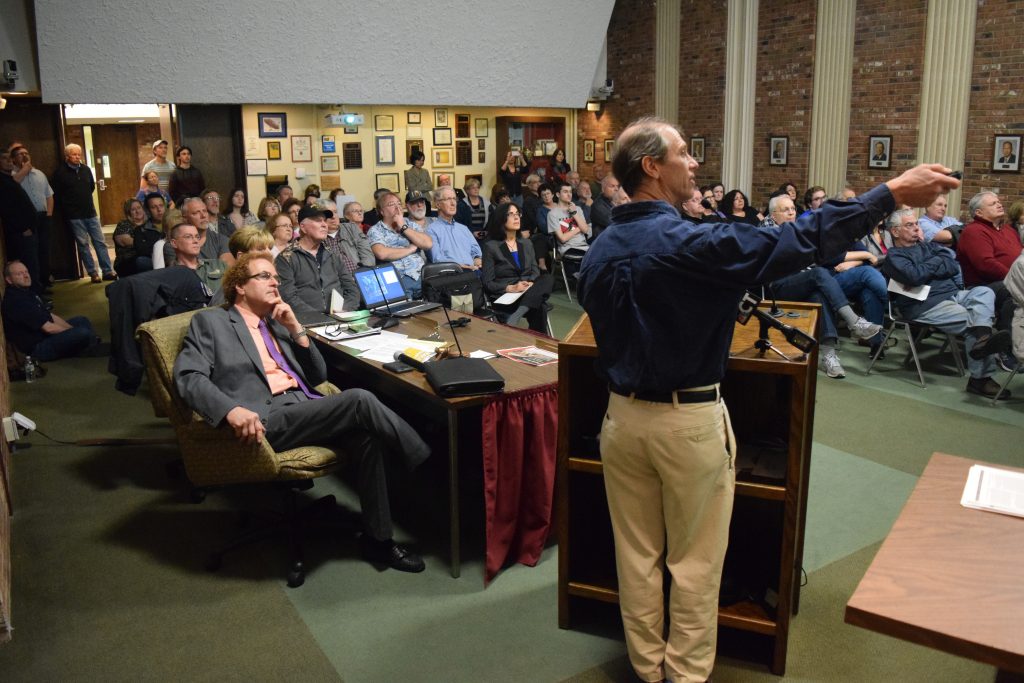SOUTH WINDSOR — Increasingly bold coyotes led to a standing-room-only forum Wednesday at Town Hall where animal control representatives tried to alleviate residents’ fears.
Their unease stems from the loss of four dogs in town in recent years, state data shows, and police say there were three coyote incidents in the past year.
Local animal control and wildlife officials joined the forum to inform residents on how best to handle coyote encounters and protect their pets.
There’s “evidence that it’s becoming a significant problem,” state Department of Energy and Environmental Protection wildlife biologist Chris Vann told the crowd.
Vann said that coyote removal is warranted if the animal directly threatens or attacks people, a supervised pet, is diseased, or displays behavior that suggests rabies. DEEP can help with trapping coyotes, he said.
It is legal to trap and hunt coyotes in Connecticut, according to DEEP’s website.
One resident asked if people could use a firearm in self-defense.
Animal Control Officer Robin Bond told residents it’s illegal to discharge a firearm within 500 feet of occupied buildings.
“Waving a gun around” will only lead to people getting hurt, Bond said.
Laura Simon, an urban wildlife consultant with the Humane Society of the United States, explained that indiscriminately killing coyotes would not control their population.
Displacing coyotes would only lead to other coyotes moving into that empty territory, potentially breeding more female coyotes and leading to an even higher population, she said.
Conversations regarding the presence of coyotes and their increasingly bold behavior have been ongoing in South Windsor on the town’s Facebook page, “South Windsor Coyote Sightings.”
State Rep. Thomas Delnicki, R-South Windsor. said he decided to host the coyote forum after residents involved in the Facebook group reached out to him.
The group currently has 769 members and contains frequent posts discussing the best ways to protect people and pets from coyote encounters, including hazing techniques, population control, and spike-covered coyote vests for pets. Based on the online conversation, some residents are open to coyote removal, while others ant to explore hazing techniques and are against any killing.
According to the Humane Society, coyotes are part of a healthy ecosystem and have a variety of roles, including keeping rodent populations in check and cleaning up animal carcasses.
Coyotes have plenty of natural food, from small prey including mice and squirrels and even some fruits, and are not going out of their way to hunt pets, Simon said.
Bond agreed. Coyotes may respond to natural instincts when they smell nearby pets, and pursue them “to go get an easy snack,” she said.
Simon advised that hazing as a community would be the most effective tool to stoke coyotes’ fear of humans. The technique — which involve facing coyotes head-on with loud noises, such as yelling, shaking a penny jar, air horns, and whistles — have been successful in many communities with large coyote populations, such as Colorado, California, and Arizona.
That doesn’t always work, however, Vann said. He said there was some evidence that coyotes could stalk or attack children, and that trapping and possibly killing coyotes was a better response.
Simon questioned his claims and stressed that coyotes were intelligent and can learn new behavior through hazing, which is most effective when a whole neighborhood does it as a group.
Coyotes “want a safe space to raise young,” Simon said. “Loud noises … create a threatening area and they learn to avoid it.”
Simon said hazing only once or twice would teach coyotes where they are not wanted.
Coyotes have displayed bold behavior recently because people don’t react properly, she said, often getting out their cameras and throwing food at them, causing them to lose their fear of people.
“We can change our behavior to protect them,” Simon said. “The onus is on us.”
Simon also explained that coyotes teach their offspring to avoid humans and neighborhoods, and killing the adults would eliminate that.
South Windsor resident Laura Callahan said she lost an 8-year-old shih tzu one day in November, at 6 a.m., while she was standing in the driveway relatively close to her dog. A coyote came up and snapped the dog’s neck, she said.
Callahan said she felt the forum created more of a “save the coyotes” environment than a “protect the community” environment, and that both sides should be respectful of each other.
She and other residents in the Facebook group noted that the messages from DEEP and the Humane Society were conflicting, and weren’t sure which was more accurate.
Town Council member Carolyn Mirek said her own dog was once attacked, as well as her friends’ pets. Mirek said she has noticed that coyotes are more present and bold in town since her time growing up in town.
“Something has changed to make them less afraid of us,” Mirek said.
Mirek and Callahan agreed that if hazing works, they support it, and were against any inhumane actions against coyotes.
It’s unclear if hazing will work, however, they said, and hope the town agrees to a course of action soon.

